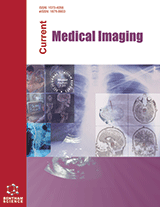Abstract
Background: The aim of this study was to compare sensitivity, specificity and accuracy of 18F-FDG PET/CT and bone scintigraphy (BS) in detection of bone metastases in breast cancer patients; particularly according to anatomical regions, CT characteristics, tumor markers and hormone receptor status.
Methods: Fifty patients, who received both FDG PET/CT and BS were retrospectively analyzed. Patients’ information including age, histological tumor type, hormone receptor positivity, c-erb B-2 oncogenes, tumor markers, clinical stages and subsequent clinical courses were reviewed. Lesion by lesion, regional and overall analyses was performed. The extent of metastases was assessed with twelve regions segmented bone scan index (BSI). The final diagnosis was established by histopathology, imaging and follow-up.
Results: Overall sensitivity, specificity and accuracy were 83.2%, 100% and 87.6% for PET/CT, and 69.8%, 76.1% and 71.5% for BS. PET/CT was found to be more sensitive, specific and accurate for all regions, except cranium. While PET/CT was more sensitive in detecting osteolytic lesions, BS was more sensitive in detecting osteoblastic lesions. CA 15-3 levels were correlated with number of metastases for both techniques (P<0.05). Although PET/CT detected more metastatic lesions, the number of lesions detected with both techniques and the calculated BSI’s were not significantly different (p= 0.061, p= 0.053, respectively). BSI and number of totally detected metastases with both techniques were correlated with the final assessment.
Conclusion: The sensitivity, specificity and accuracy of PET/CT in detecting overall and subregional bone lesions were significantly higher. Although PET/CT detected more metastatic lesions, both techniques seemed to supply complementary information to each other.
Keywords: FDG, PET/CT, imaging, bone scintigraphy, breast cancer, bone metastases.














